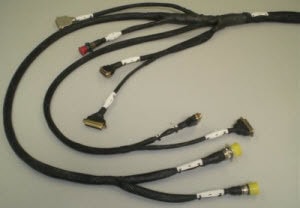The manufacturing of cable assemblies and wire harnesses involves a variety of processes to ensure the final product’s strength, function, and performance. One of the critical processes is cable assembly testing. The goal of this testing process is to ensure that the product will meet or even exceed the application and industrial specifications. But what are the testing procedures performed on industrial wire and cable assemblies. We answer this question with this post.
4 Cable Assembly Testing Procedures
The testing procedures described below are performed by all cable manufacturers to ensure their products are fit for application use. The tests need to be performed while referring to IPC or WHMA guidelines.
- Electrical Testing: The entire cable assembly needs to be thoroughly checked for opens, shorts, and incorrect wiring. The method to perform this test is attach the assembly’s end connectors to mating connectors, which in turn is connected to a fixture. The fixture is the device that checks the assembly for open wiring, and short circuits between shields and conductors. It can also check if the pins of the assembly’s components are in the proper place.
- Visual Testing: As the name suggests, the cable is visually inspected for any defects and deformations. Components that are tested are sockets, connectors, markings, finishes, as well as basic design and construction. Dimension inspection is also performed to ensure the cable is up to specifications.
- Environmental Testing: These tests are designed to check whether the cable can continue performing despite exposure to various environmental elements. The cable is subjected to the following types of elements:
- Vibrations
- Thermal shocks
- High humidity levels
- Salt sprays for corrosion
- Elevated and decreased temperatures
- Mechanical Testing: This stage of testing focuses on the connectors, and the overall durability of the product. The connectors are disconnected, and then reconnected to determine how much force is required to connect or disconnect the assembly. Product durability is tested by subjecting it to a set number of flexing cycles. This helps the tester determine the approximate service life of the assembly.
It is important to come up with a testing plan, which comprises the necessary tests to ensure the performance of the product. Thorough cable assembly testing will ensure that cable will perform as required in extreme environments, and have a long service life.

